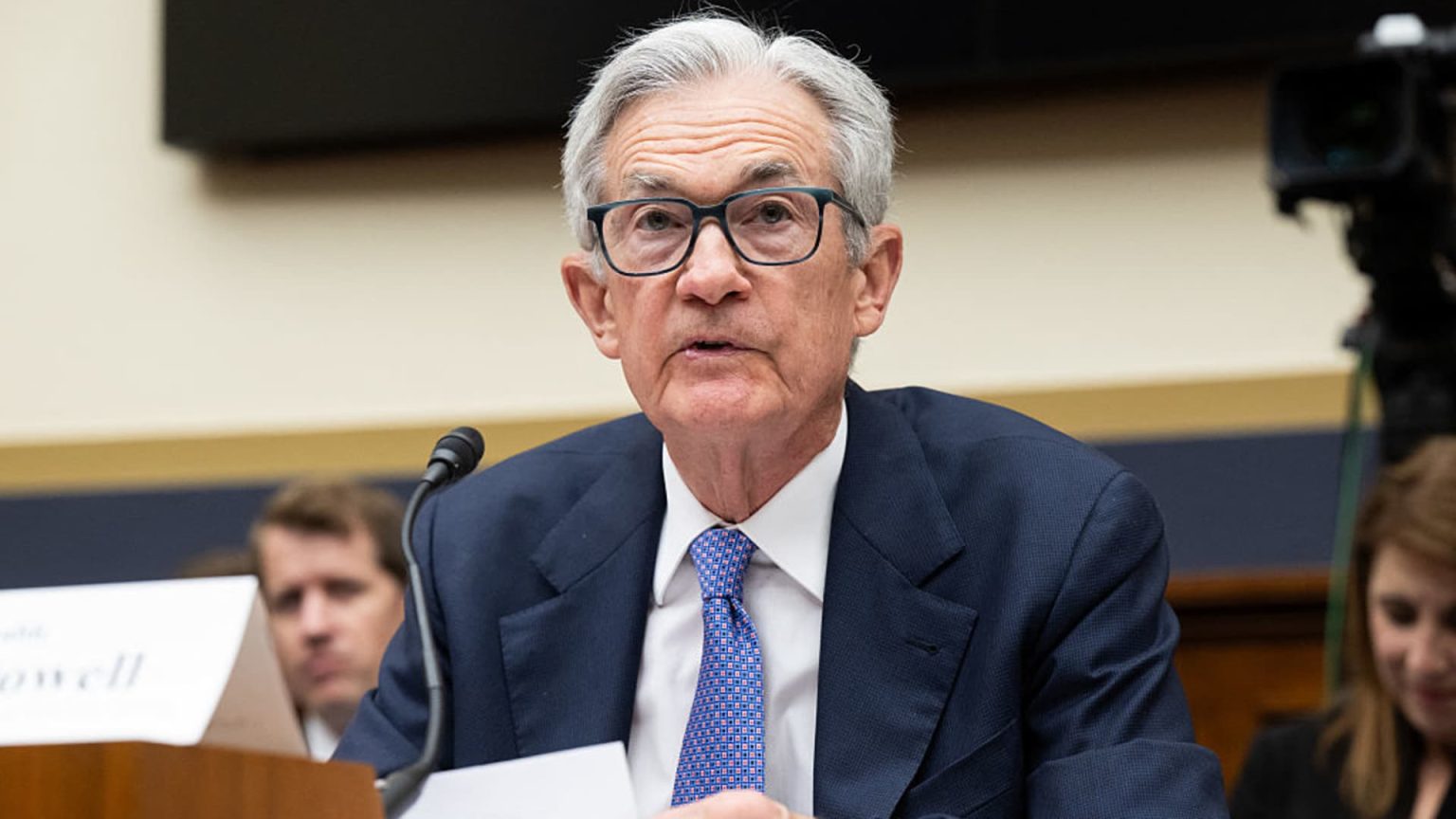In a recent testimony before the House Financial Services Committee, Federal Reserve Chair Jerome Powell revealed that U.S. monetary policy would likely have shifted towards easing had it not been for the controversial tariff plan introduced by President Donald Trump. During a European Central Bank forum in Sintra, Portugal, Powell indicated that rising inflation forecasts tied to tariffs had effectively stalled potential rate cuts. This development raises questions about the Fed’s future policy directions amid intense political pressures and global economic uncertainties.
| Article Subheadings |
|---|
| 1) Impact of Tariffs on Monetary Policy |
| 2) Market Reactions and Predictions |
| 3) The Future of Jerome Powell at the Fed |
| 4) International Perspectives on U.S. Monetary Policy |
| 5) Economic Stability Goals |
Impact of Tariffs on Monetary Policy
During the panel discussion, Powell stated that the Fed was effectively forced to maintain its current interest rates due to the unpredictability surrounding President Trump’s tariff policy. The tariffs, aimed at imported goods, led to rising inflation expectations that complicated the central bank’s ability to adjust rates favorably. Powell remarked,
“In effect, we went on hold when we saw the size of the tariffs and essentially all inflation forecasts for the United States went up materially as a consequence of the tariffs.”
This statement underscores the Fed’s cautious approach as the tariffs created significant inflationary pressures that could impact consumer spending and economic growth.
Market Reactions and Predictions
Following Powell’s comments, financial markets reacted with a mix of caution and optimism. With the Federal Open Market Committee (FOMC) holding the key borrowing rate steady, traders are speculating on upcoming rate cuts. Currently, Fed funds futures traders are indicating a probability exceeding 76% that the central bank will maintain its stance in the upcoming July meeting. Powell noted the Fed’s strategy is being evaluated
“meeting by meeting.”
Leading into this critical gathering, analysts are closely monitoring economic data for any signals that could alter this trajectory.
The Future of Jerome Powell at the Fed
Powell’s term as chair of the Federal Reserve is coming to an end in 2026, which raises questions about his future tenure with the institution. While under pressure from President Trump, who described him as a “very average mentally person,” and called his performance “terrible,” Powell has remained noncommittal about whether he will stay on as governor after his chairmanship expires. In response to inquiries, he stated,
“I have nothing for you on that today.”
His position as governor lasts until 2028, leaving significant room for speculation regarding the continuity of leadership at the Fed as it navigates political and economic challenges.
International Perspectives on U.S. Monetary Policy
At the European Central Bank forum where Powell spoke, international central bank leaders provoked questions about how their respective institutions might react in similar situations confronting Powell. There is a global sentiment that America’s unpredictable tariff policy is unsettling international markets, making it difficult for central banks to formulate coherent monetary policies. Global trade discussions were at the forefront of the event, painting a picture of worldwide uncertainty about the future relationship between the U.S. and global economies. West European nations, in particular, have been observing the evolving U.S. trade policies with concern, as they could have reciprocal effects on trade dynamics.
Economic Stability Goals
Powell emphasized the Federal Reserve’s commitment to achieving economic stability through goals encompassing price stability, maximum employment, and financial stability. The Fed Chair expressed his concerns regarding the economy’s timing and trajectory to achieve these aims. He stated,
“What keeps me awake at night is: How do we get that done?”
As part of this commitment, Powell wants to ensure that he can hand over a well-functioning economy to his successor. Powell’s approach reflects a keen awareness of the vulnerabilities in U.S. and global economic conditions, prompting the need for responsible and calculated monetary policy decisions.
| No. | Key Points |
|---|---|
| 1 | Federal Reserve Chair Jerome Powell indicated that tariffs imposed by President Donald Trump prevented the Fed from making necessary interest rate cuts. |
| 2 | The Fed has maintained its rates, with traders expecting no cuts in the immediate future due to inflation concerns linked to trade policies. |
| 3 | Powell’s future at the Federal Reserve remains uncertain as his term as chair is concluding in 2026. |
| 4 | International leaders are monitoring U.S. monetary policy closely in light of ongoing trade tensions and its potential impact on global markets. |
| 5 | Powell aims to ensure a stable economy for his successor, focusing on price stability and maximum employment amid political pressures. |
Summary
The testimony of Federal Reserve Chair Jerome Powell has highlighted the complex interplay between U.S. trade policies and monetary policy, particularly the impact of President Donald Trump’s tariffs. As inflation expectations rise, the Fed’s cautious stance on rate cuts reflects broader economic uncertainties. Looking ahead, Powell’s future at the Federal Reserve remains a topic of speculation, while global leaders express concern over the potential ramifications of U.S. policy decisions on international markets.
Frequently Asked Questions
Question: What does the Fed’s current monetary policy entail?
The Federal Reserve is currently maintaining interest rates between 4.25% and 4.5%, effectively adopting a wait-and-see approach due to rising inflation expectations linked to tariffs.
Question: How do tariffs affect inflation rates?
Tariffs can lead to increased costs for imported goods, which may result in higher prices for consumers, thereby raising inflation rates overall.
Question: What are Powell’s main concerns as he leads the Fed?
Powell’s primary concerns include achieving price stability and maximum employment while navigating the complexities of U.S. trade policies and their impact on the economy.


